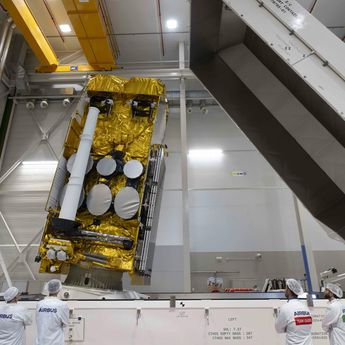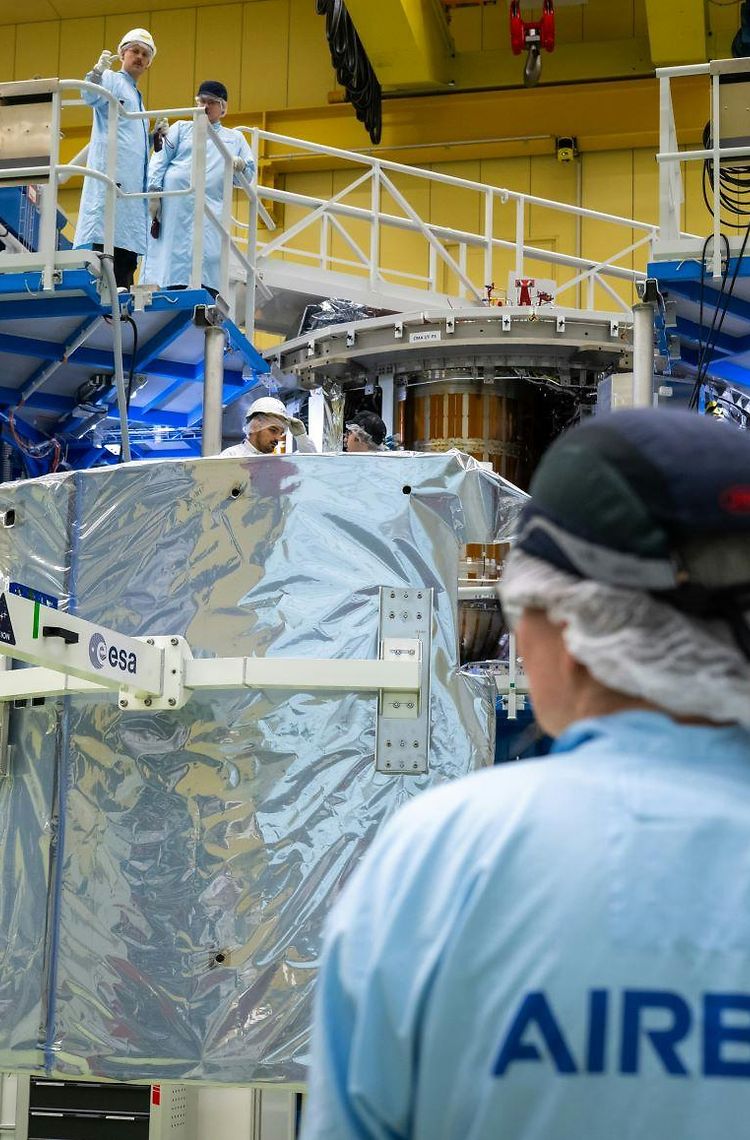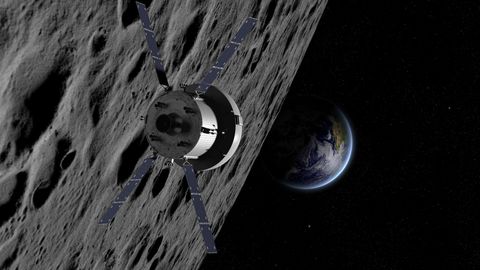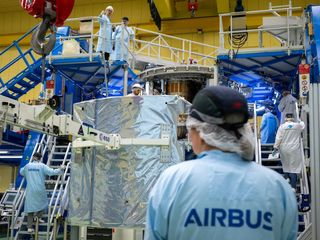Bremen, Germany, 10 November 2025 – The fourth European Service Module (ESM-4) is ready to leave Airbus’ facilities in Bremen, Germany, and be shipped to NASA’s Kennedy Space Center in Florida, USA. On arrival it will be tested and integrated with the Orion Crew Module ready for the next stage of NASA’s Artemis programme.
Built by Airbus under contract to the European Space Agency (ESA), ESM-4 will be a vital part of the Artemis IV mission which envisages astronauts going to live and work in humanity’s first lunar space station, Gateway, which will enable new opportunities for science and preparation for human missions to Mars.
“Delivering the fourth ESM takes us one step closer to a new space era with a lunar space station and increased opportunities for deep space scientific research. Europe’s role, through ESA, is crucial in this pioneering NASA-led programme,” said Ralf Zimmermann, Head of Space Exploration at Airbus.
“ESM-4 will play a key role as the Artemis IV mission is due to deliver the International Habitation Module (Lunar I-Hab) of the Lunar Gateway space station. This state-of-the-art hardware, developed by Airbus Defence and Space and its subcontractors across Europe, demonstrates our ability to contribute to major international partnerships,” said Daniel Neuenschwander, Director of Human and Robotic Exploration at ESA.
The ESM modules provide engines, power, thermal control, and supply astronauts with water and oxygen. The ESM is installed underneath the crew module and together they form the Orion spacecraft. Thales Alenia Space Italia provides the thermal control system to keep the Orion crew modules between 18 and 24°C by radiating excess heat out of the ship but also keeping the cold at bay.
The four solar arrays on Orion generate 11.2 kW of electricity, enough to power two four-person households on Earth. Only about 10% of the power is needed for the ESM, with the remaining 90% going to the batteries and equipment in the crew module. The Artemis I mission showed the solar panels were able to produce a little more power than expected and this additional energy will be of use as the Artemis programme evolves.
The energy stored in the batteries of the Crew Module is key as it ensures that the Orion spacecraft has power even when the Sun is obscured. The batteries also provide power for a safe return when the ESM separates from the crew module at the end of the mission.
To enable astronauts to concentrate on the most important tasks, the electronics onboard the ESM, controlled by the Crew Module, provide a very high level of autonomy, such as temperature regulation and solar wing rotation to track the Sun.
Orion has 33 engines onboard the ESM to provide thrust and manoeuvring capabilities. The main engine, a repurposed Space Shuttle orbital manoeuvring system engine (OMS-E) provided by NASA, generates 26.5 kilonewtons of thrust. This provides enough force to escape Earth’s gravitational field and perform the translunar injection burn, and to get into the Moon’s orbit. Eight auxiliary thrusters act as back-ups to the OMS-E and for orbital corrections. There are also 24 smaller engines for attitude control in space, enabling the spacecraft to rotate or change its angle during docking manoeuvres.
Notes for editors: photos, videos, footage, infographics and interviews can be downloaded from our broadcast room at https://www.airbus.com/en/products-services/space/space-exploration/moon-missions/orion-european-service-module
Image: Airbus ships fourth European Service Module for Artemis IV ©Airbus
@NASA @Nasa_Orion @ESA @esaspaceflight @LockheedMartin #OrionESM @NASAArtemis #Artemis @AirbusSpace #SpaceMatters #NextSpace
Contacts
Ralph Heinrich
AIRBUS | Defence and Space
Jeremy Close
AIRBUS | Defence and Space
Space Latest News
Continue Reading

Airbus ships fourth European Service Module for Artemis IV
Press Release
Space
Fourth European Service Module (ESM-4) is ready to leave Airbus’ facilities in Bremen, Germany, and be shipped to NASA’s Kennedy Space Center, Florida, USA
Sentinel-1D: the radar that never sleeps
Web Story
Space

Airbus-built SpainSat NG-II secure communications satellite successfully launched
Press Release
Space

Airbus, Leonardo and Thales sign Memorandum of Understanding to create a leading…
Press Release
Company

Tracking air pollution from space
Web Story
Space




